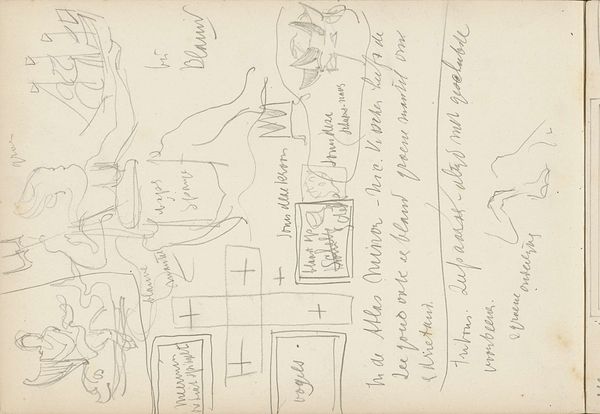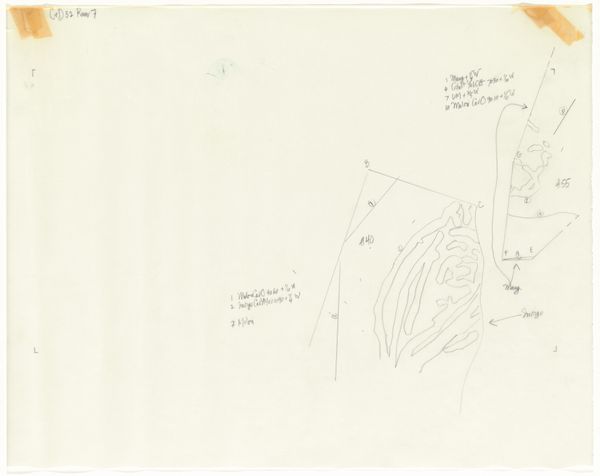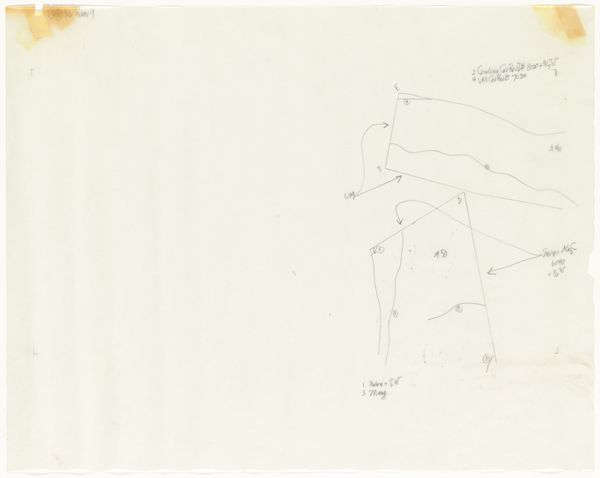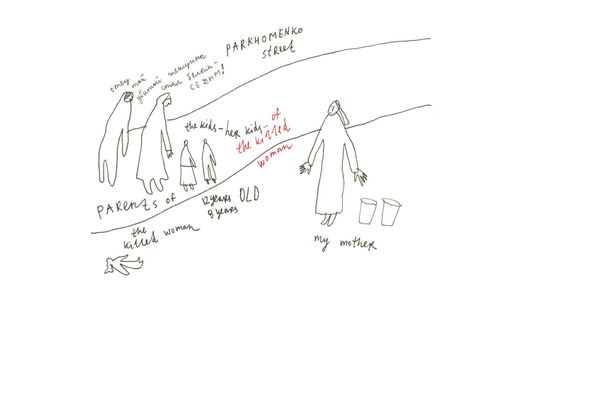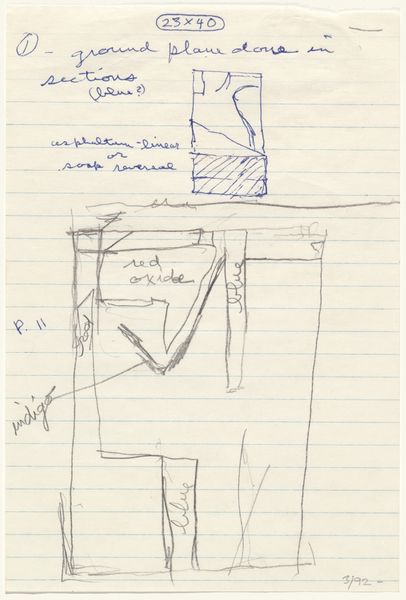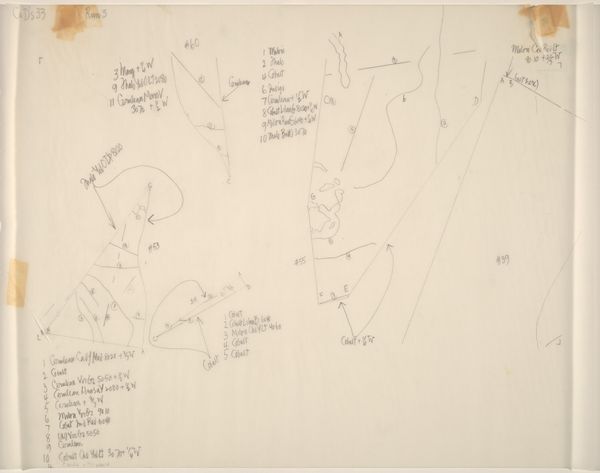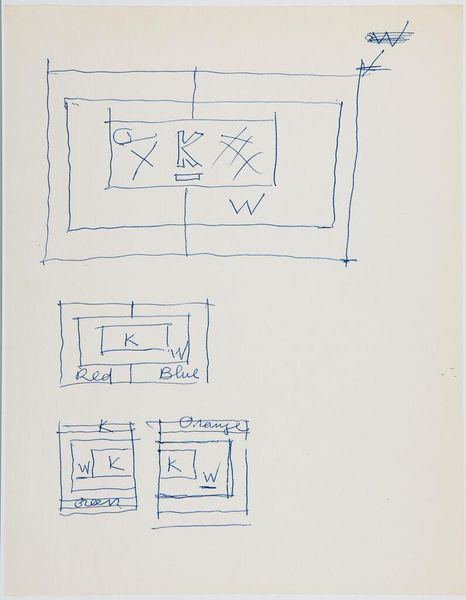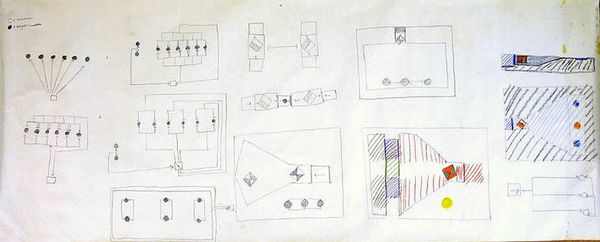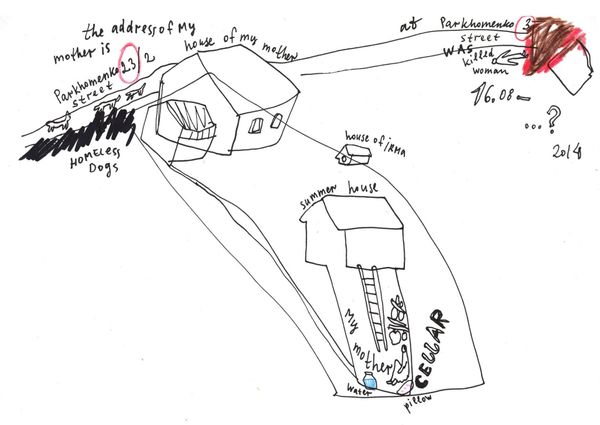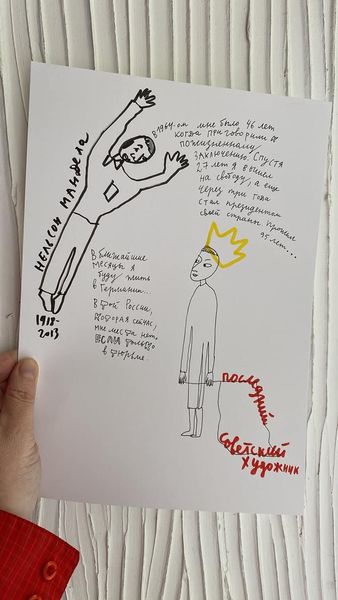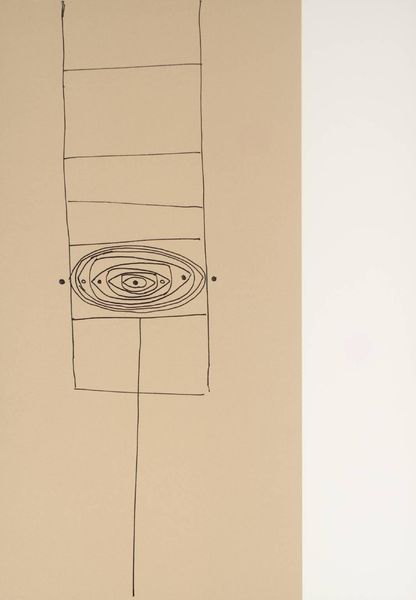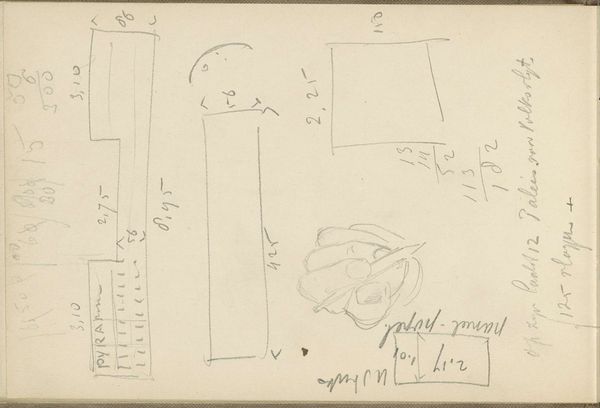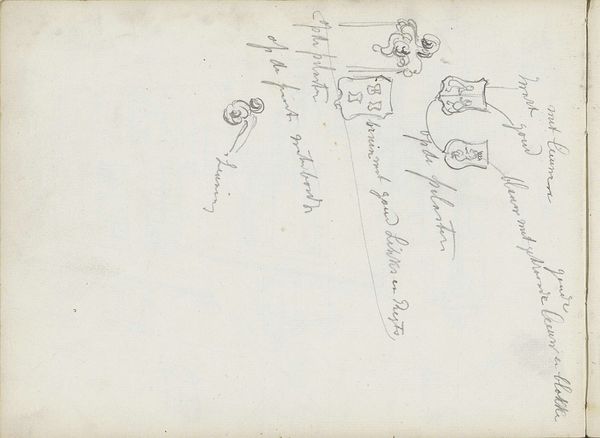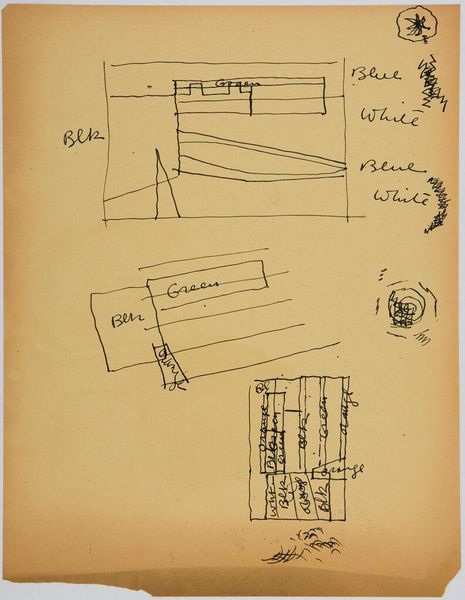
drawing, paper, ink
#
pencil drawn
#
drawing
#
contemporary
#
narrative-art
#
pencil sketch
#
paper
#
ink
#
geometric
#
cityscape
Copyright: Alevtyna Kakhidze,Fair Use
Curator: Alevtyna Kakhidze's "Untitled," created in 2022, pulls us into a world rendered with ink and pencil on paper, doesn’t it? It's one of those pieces that feels deeply personal. Editor: My first thought? Melancholy. There's a fragility in those sketched buildings, a sort of tentative existence sketched in faded sepia, almost like the buildings themselves are breathing their last. And that text scattered about… it adds a whole layer of introspective musing to it. Curator: Absolutely, I agree. I see the script in the original language that looks to be Ukrainian and English scattered across the plane, and I think that contributes to that fragile feeling and contemplative effect. I see skeletal trees next to bombed out buildings and words about nature in both languages, next to one another, which to me indicates Kakhidze grappling with themes of war, resilience and the deep, abiding connection between nature and the human spirit. Editor: Right. Language itself becomes a symbol, layering meaning. Ukrainian text evokes a specific cultural context, resilience and resistance, while the English translations attempt to make this understandable for others. There’s an intriguing echo of ancient icon painting here where text clarifies and elaborates meaning, and yet in a way that isn't entirely translatable. I'm fascinated by the image of nature having the ability to see what is happening in these structures. Do the leaves reflect or regret this imagery that they see? Curator: Beautifully put! It makes me think about how memory works—how fragments of experience, in this case, the visual language of loss alongside words of resilience, stick with us. Maybe that's why the composition feels so intentionally fragmented; the cityscape almost appears to be dissolving into the page itself. The narrative is there but it needs reconstruction. This evokes, for me at least, the way we process trauma. The artwork serves as an invitation to contemplate collective and personal experiences that have no fixed form or narrative and resist memorializing into fixed historical facts. Editor: Precisely. In iconography, ruins often signify transition, a passage between states of being. Perhaps Kakhidze is using this visual vocabulary to highlight not just the destruction, but also the potential for rebirth that lies dormant within it. Curator: Exactly. And the simple materials she uses emphasize the raw immediacy of that transition—like a fleeting thought captured before it vanishes. A work that will continue to speak as our world confronts constant, unsettling change. Editor: It reminds us that the seeds of something new are almost always germinating even amidst what seems like utter devastation. A poignant observation rendered so simply.
Comments
No comments
Be the first to comment and join the conversation on the ultimate creative platform.
